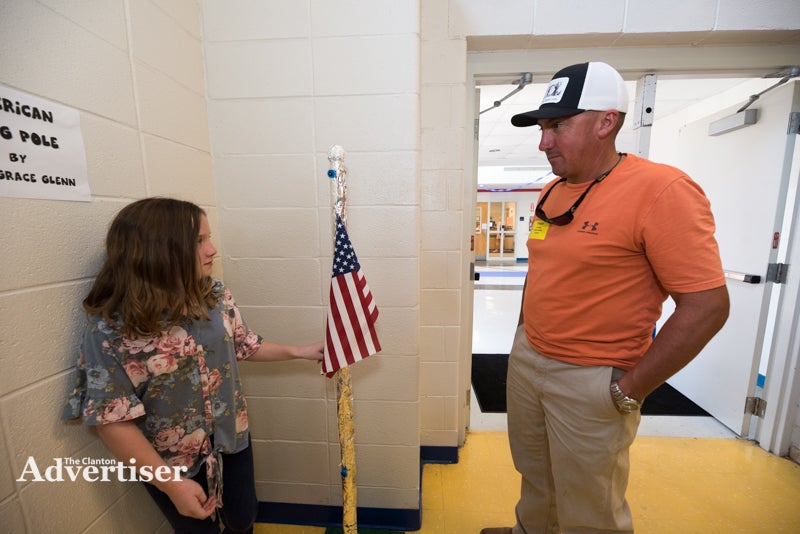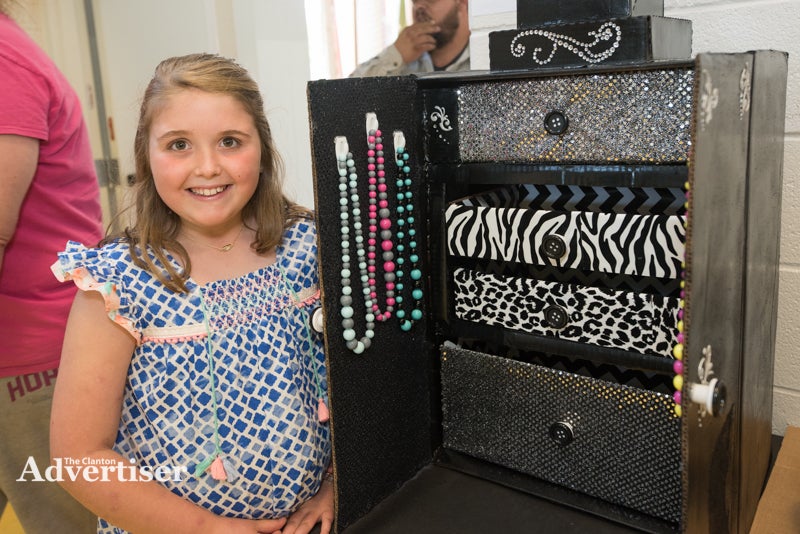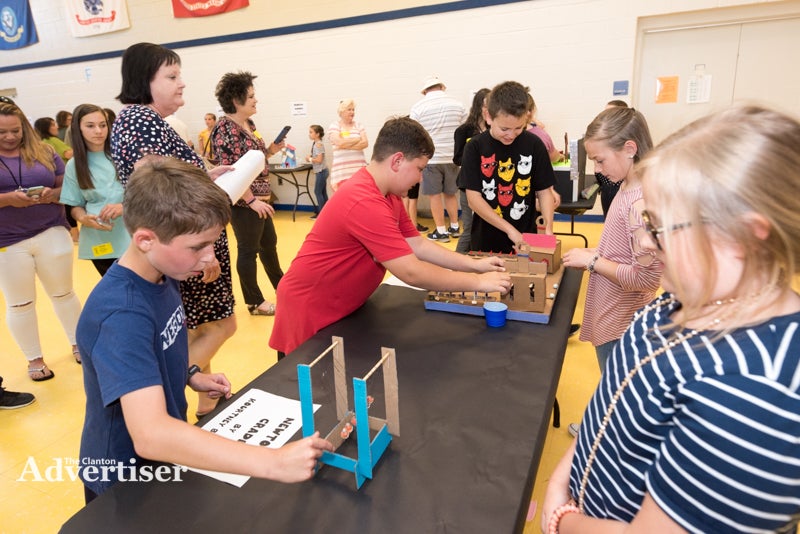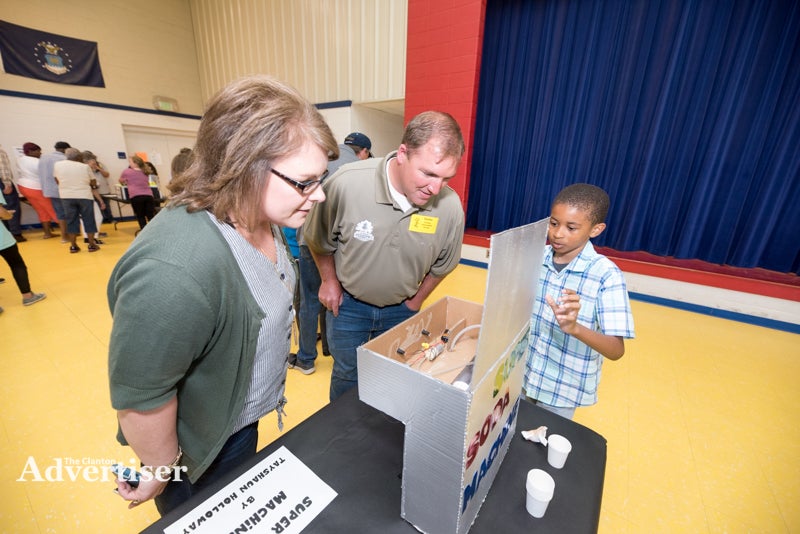CIS students show off cardboard creations
Published 1:47 pm Thursday, May 16, 2019
By JOYANNA LOVE/ Senior Staff Writer
When you look at a box what do you see?
When students in Lisa Brown’s fourth grade class at Clanton Intermediate School look at a box, they see building material for the annual Maker Museum.
Students’ creations were on display May 15 in the school’s gymnasium. One of the requirements was for the project to be interactive in some way. Many students spent weeks creating their projects.
Emma Elmore took inspiration for her cardboard castle and catapult game from one of her favorite book series.
“I really like to read, so I got my idea from one of the book series that I read —The Ranger’s Apprentice,” Emma said. “The base where they do most of their thinking … is called Redmont Castle. It’s like a medieval-type series.”
Attendees tried to shoot a ball of duct tape from the catapult into different areas of the castle.
“I built it and designed it by myself,” Emma said. “It’s really fun. Ms. Brown had a really good idea when she started this.”
Emma said it was her first time building something out of cardboard like this. She said she enjoyed the design phase of the project the most.
Mya Bailey created a TV with a football-themed video game playing as her project.
Bailey said she developed the design because she enjoys watching TV and playing video games with her brother.
The most challenging aspect of the design was created the scenes on paper that are moved through the “screen” portion of the TV.
Kourtney Benson chose to create a Newton’s Cradle using cardboard string and marbles.
“My friend has one, and I thought it would be cool to make it out of cardboard,” Benson said.
She said the device “uses momentum and energy to bounce balls (the marbles) off of each other.”
Kourtney said she measured rectangles out of cardboard to ensure they would fit where needed in the support structure for the dowels holding the strings for the marbles up.
Millie Cleckler built a giant jewelry box.
“What inspired me to do this is I love jewelry,” Cleckler said. “All of the drawers open, and then up here (on top) you have a compartment for your rings.”
She said all of the sides even and “squared up” was the most challenging.
Each of the cardboard drawers were covered with decorative fabric with wrapping paper on the inside.
Shelby Grant repurposed a barrette as a launcher similar to a pitching machine for balls made out of pipe cleaners in her softball-inspired project.
“You try to hit the girl,” Shelby said.
She said the most challenging aspect was the launcher.
“I made drums, and they are made out of different types of bottles,” Brianna Goggins said.
The bottles set inside a cardboard frame. Pencils served as drumsticks for the project.
Brianna said gluing the decorations in place was the most challenging aspect. Her favorite part was “the racket it makes because I love to make racket.”
Parents helped some of the students bring their ideas to life.
Lexi-Kate Hayes said her father helped her create a life-sized piano out of cardboard.
“I’ve played piano for at least five years,” Lexi-Kate said.
A portion of the keys can be pressed to make noise.
“We put a rubber band on it so it will come back up, and we put a screw under it, so it would make music,” Lexi-Kate said.
She said making this portion was her favorite part of the project, but it was also the most challenging.
Some students got designs from projects they had seen on social media websites.
This was the case for Will Ward, who created a projector for use with a cellphone out of cardboard and a magnifying glass.
Will said one of the challenging parts was getting the image to focus and determining how far away from a wall it needed to be.
He said his favorite part was being able to watch YouTube larger than on his phone screen.
Tayshaun Holloway found a project for his soda fountain machine online. Tayshaun said he “liked the idea of making a soda machine out of cardboard to show people that you can make something like this” out of cardboard.
The drink machine was fully functional, using a 9-volt battery and motor to dispense orange soda and lemon-lime soda.
He said the wiring, which his stepfather helped him with, was the most difficult part.
An online design served as a spring board for Stella Traywick’s foot-pedal flush toilet.
“I thought about public restrooms and they should have these because who likes having to touch the handle,” Stella said.
While a Pinterest design gave her the outline shape for the toilet, Stella designed the interior working for the pedal flush, which was demonstrated using M&Ms, to work.
Stella said she used rulers and a spring to make it work.
She said bending the cardboard to be the right shape was the most difficult aspect of the project.



































